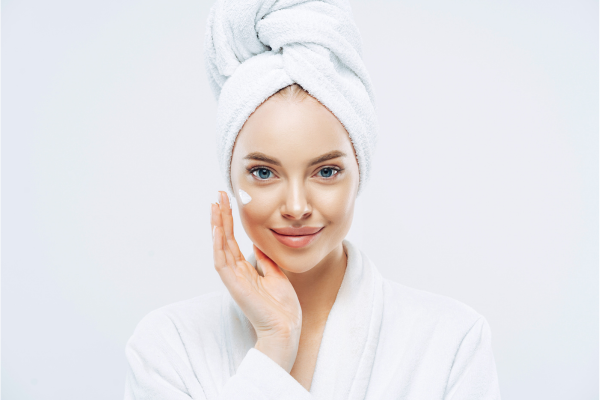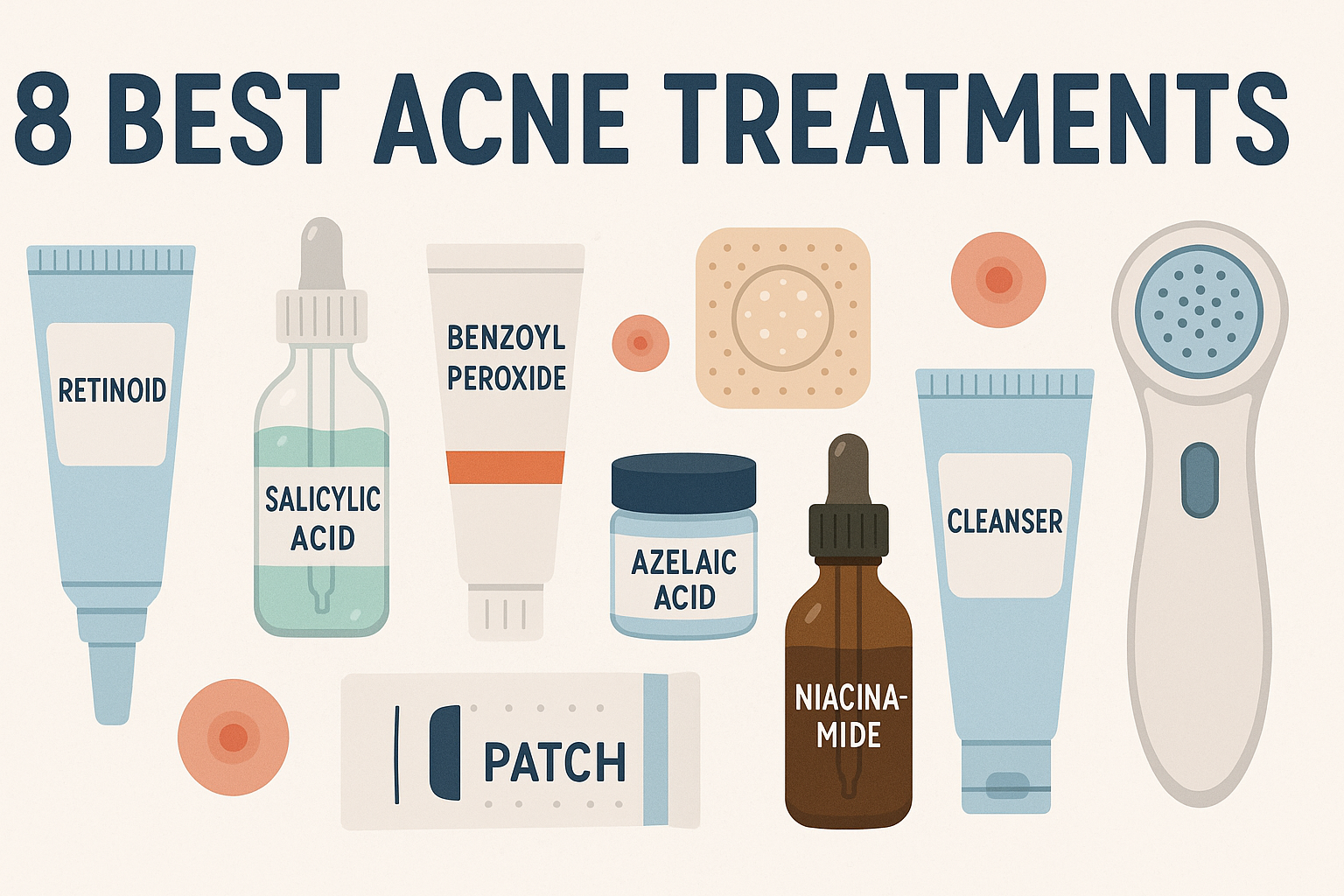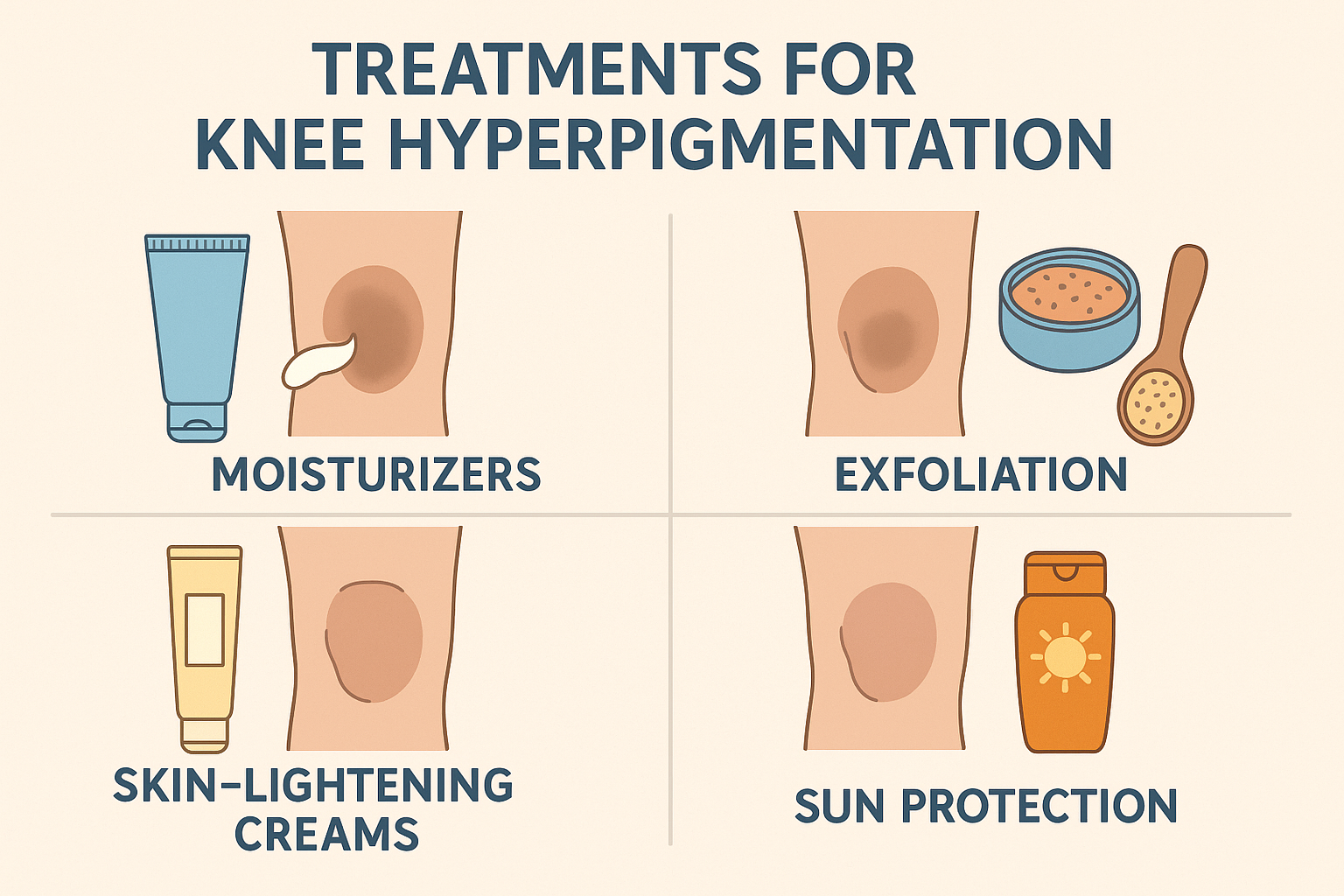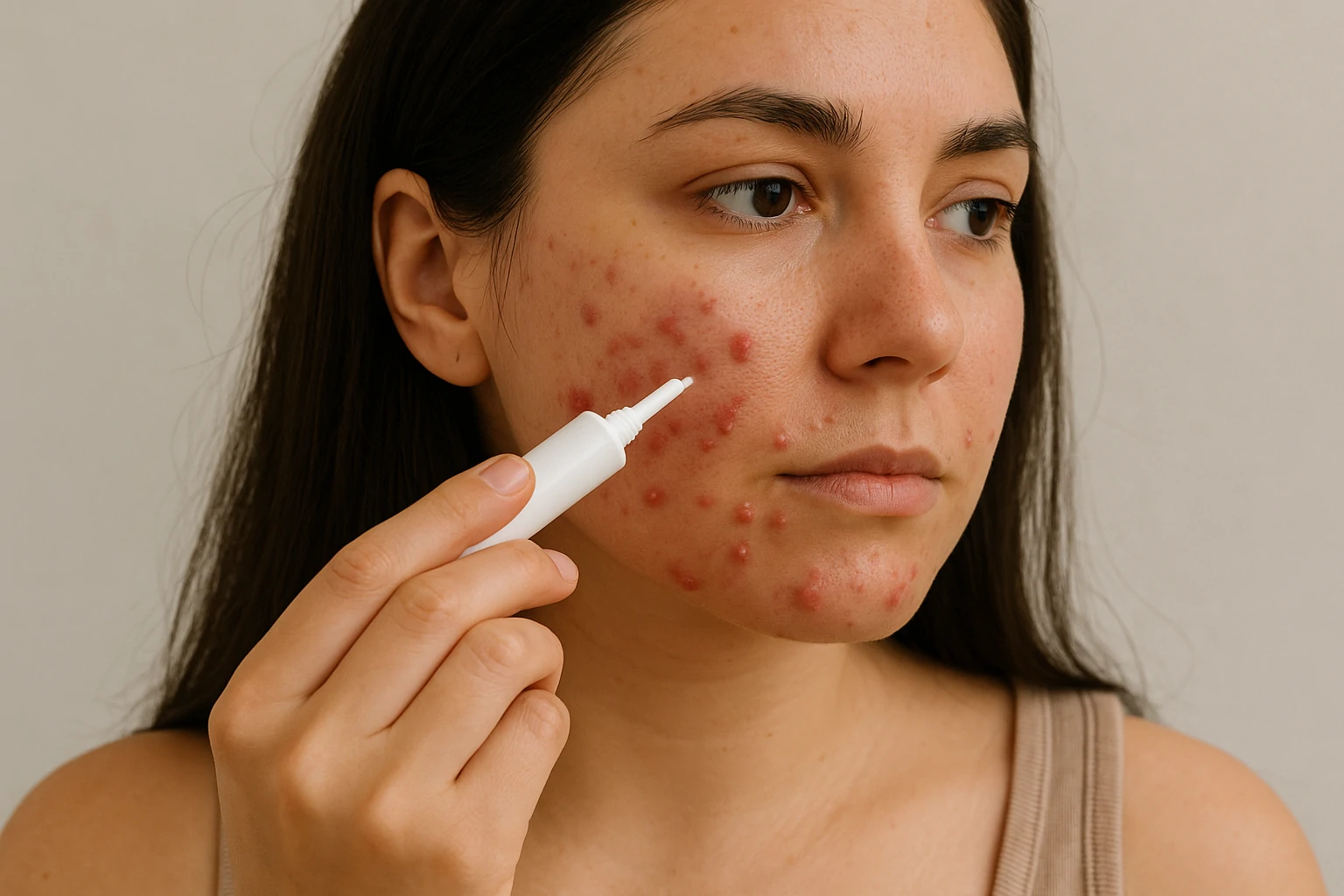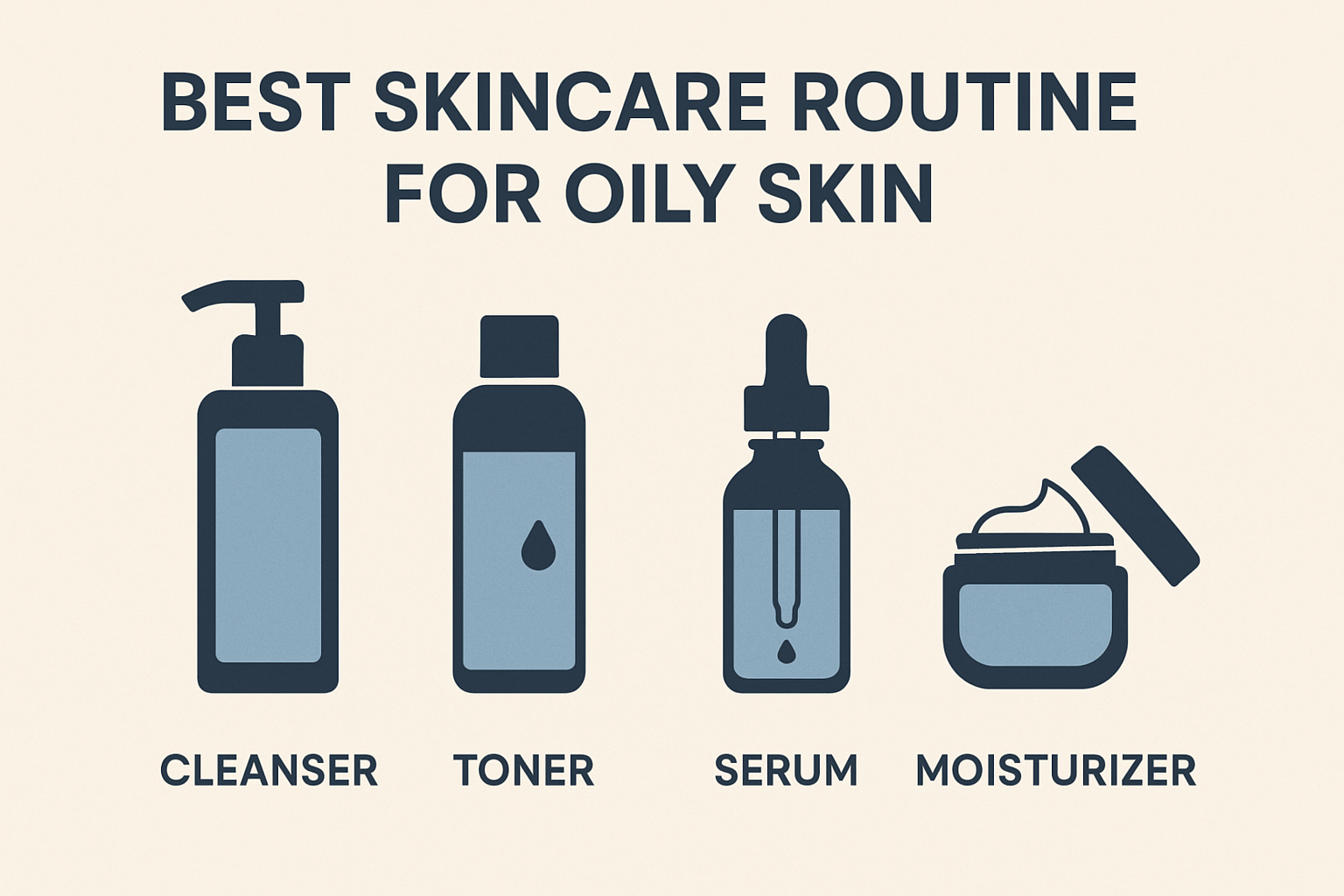13 Best Dark Spot Treatments, Backed by Dermatologists

Dark spots—also known as hyperpigmentation—are one of the most common skin concerns, especially for people in their 20s to 40s. These spots appear when your skin produces too much melanin, often due to sun exposure, acne scars, hormonal changes, or certain medications. They can leave your skin tone looking uneven and are often tough to cover, even with makeup. That’s why many people search for the best dark spot treatments to restore a more even, glowing complexion.
With so many options available—from natural remedies to in-office procedures—it can be overwhelming to know where to start. And without understanding your skin’s unique needs, using the wrong product might delay results or even make things worse.
To guide you through the process, we asked board-certified dermatologists to share 13 dermatologist-approved dark spot treatments that are safe, effective, and tailored to different skin types and causes. Whether your dark spots come from acne, sun damage, or post-inflammatory pigmentation, this guide will help you find the right solution for clearer, healthier-looking skin.
What Causes Hyperpigmentation and Dark Spots?
Hyperpigmentation appears as darker patches on the skin caused by an increase in melanin production, the pigment responsible for skin, hair, and eye color. According to Dr. Michelle Henry, a certified dermatologist in New York City, hyperpigmentation is very common and can have various causes.[1Byrdie: 13 Dark Spot Treatment Options That Dermatologists Swear By]
The primary culprit is ultraviolet (UV) radiation from sunlight. UV rays trigger melanocytes—cells that produce melanin—to generate more pigment as a defense mechanism, leading to uneven skin tone if not protected properly.
Other causes include skin trauma like acne, rashes, eczema, or irritation, known as post-inflammatory hyperpigmentation (PIH). This happens when dark spots develop after inflammation or skin injury heals.
Another common type is melasma, which causes symmetrical brown patches, often on cheeks, forehead, or upper lip. Melasma is usually linked to hormonal changes during pregnancy, birth control use, or hormone therapy.
Knowing the exact cause of dark spots helps you choose the safest and most effective treatment tailored to your skin.
Can Scarring Cause Dark Spots?
Yes, scars can lead to dark spots, especially if they cause inflammation. This condition is called post-inflammatory hyperpigmentation (PIH). Dr. Dendy Engelman, a board-certified dermatologic surgeon, explains that PIH occurs when the skin produces excess melanin in response to injury or irritation.
PIH looks like dark or reddish marks around scars, with color varying by skin tone and inflammation severity. It often happens after acne, scratches, or skin treatments like waxing and chemical peels.
Scarring can also affect skin texture. There are two main types of scars:
- Atrophic scars (depressed), commonly from severe acne
- Hypertrophic scars (raised), caused by excess scar tissue growth
Understanding whether scars cause only discoloration or also texture changes is important. Topical treatments such as vitamin C serums, niacinamide, and retinoids can fade PIH marks. For texture issues, advanced procedures like laser therapy or microneedling may be needed.
Top Types of Dark Spots That Are Easiest to Remove
Not all dark spots are equally easy to treat. Dr. Michelle Henry notes that age spots and sunspots are usually the simplest to fade. These spots result from melanin buildup after repeated UV exposure, commonly appearing on the face, hands, and chest. Because they come from external causes and localized pigmentation, they often respond well to topical creams, chemical exfoliants, or mild laser treatments.
On the other hand, post-inflammatory hyperpigmentation (PIH) and melasma are more stubborn. PIH is triggered by inflammation, while melasma is hormonally driven, often flaring during pregnancy or with contraceptive use. These types tend to be persistent and prone to recurrence, so treatment requires care and consistency.
The key to effectively clearing dark spots is identifying their cause. If hormones or inflammation are involved, home remedies may fall short. Consulting a dermatologist can help you choose the right active ingredients or clinical options like lasers or chemical peels.
1. Brighten Dull Skin Fast with Vitamin C
Vitamin C is one of the best-known ingredients to brighten dark spots and prevent new pigmentation. The American Academy of Dermatology explains that vitamin C blocks the enzyme tyrosinase, which helps produce melanin, leading to a more even skin tone.[2American Academy of Dermatology Association. How to fade dark spots in skin of color.]
Regular use of vitamin C serum gradually fades dark spots, especially when paired with sunscreen. A popular choice is L’Oréal Revitalift 10% Pure Vitamin C Concentrate, which helps boost brightness and reduce mild hyperpigmentation.
2. Exfoliate with Papaya
Papaya is a natural exfoliant that removes dead skin cells and brightens the complexion. It contains alpha-hydroxy acids (AHAs), mild chemical exfoliators that loosen the bonds between dead skin cells, revealing fresher, brighter skin underneath.[3Eminence Organics Skin Care: Acids And Enzymes: Gentle Exfoliation For Sensitive Skin]
Dr. Dendy Engelman adds that papaya also stimulates collagen production, making skin smoother and firmer.
How to use: Mash ripe papaya and apply as a mask on clean skin. Leave for 15–20 minutes, then rinse while gently massaging in circular motions to lift dead cells. Use 1–2 times per week for best results.
3. Apply Antioxidants
Antioxidants protect skin from oxidative stress, which worsens hyperpigmentation. Dr. Engelman explains that UV exposure triggers melanin production as a defense, but this can darken spots further. Antioxidants neutralize free radicals that damage skin cells and slow down excessive pigmentation.
Products like SkinBetter Antioxidant Alto Defense Serum contain powerful antioxidants like vitamins C and E, which brighten skin and strengthen the skin barrier.
4. Slather Sunscreen On
Sun protection is the most important step to prevent and treat dark spots. Dr. Michelle Henry emphasizes that UV rays stimulate excess melanin, worsening dark spots. For daily protection, use sunscreen with at least SPF 30, and SPF 50 if outdoors for more than an hour.
Both chemical and mineral sunscreens can block UVA and UVB rays. Reapply every 2 hours for best results.
5. Brighten with Yogurt
Yogurt contains lactic acid, a natural AHA that gently exfoliates and brightens dull skin. It also has soothing properties suitable for sensitive skin. Dr. Engelman notes that regular yogurt masks help even out skin tone and reduce redness.[4Netmeds: Greek Yogurt for Skin: 5 Powerful Reasons to Add It to Your Beauty Routine for Radiant, Youthful Glow]
Mix plain yogurt with honey for antibacterial benefits or oatmeal for dry skin. Apply as a mask for 10–15 minutes, then rinse gently.
6. Get a Laser Resurfacing Treatment
If topical treatments don’t fade dark spots, laser resurfacing can be effective. This uses fractional lasers like Fraxel to create tiny wounds on the skin’s surface. As the skin heals, new cells form and pigmented cells are pushed out in a process called MENDS (Microscopic Epidermal Necrotic Debris).
Results include more even skin tone, smoother texture, and significant reduction of dark spots after several sessions.
7. Make a DIY Turmeric Face Mask
Turmeric has long been used in traditional medicine for its anti-inflammatory and antioxidant properties. Its active ingredient, curcumin, helps block melanin production that causes dark spots.[5Hollinger JC, Angra K, Halder RM. Are natural ingredients effective in the management of hyperpigmentation? A systematic review. J Clin Aesthet Dermatol. 2018;11(2):28-37.]
To make a mask, mix 1 teaspoon turmeric powder with 1 teaspoon honey (a natural moisturizer and antibacterial). For extra brightening, add a few drops of lemon juice (rich in vitamin C), if your skin isn’t sensitive.
Apply to a clean face, leave for 10–15 minutes, then rinse with warm water. Use up to twice a week but be careful, as turmeric can temporarily stain skin yellow.
8. Turn to Acids
Alpha-hydroxy acids (AHAs) and beta-hydroxy acids (BHAs) are chemical exfoliants that speed up skin renewal and remove dead skin cells causing dark spots. AHAs like glycolic, lactic, citric, and malic acids come from fruits and soften the bonds between dead cells for brighter, more even skin.
BHAs like salicylic acid penetrate pores and work well for oily or acne-prone skin. Products like Glow Recipe Strawberry Smooth BHA + AHA Salicylic Serum combine both acids with antioxidants.
Use exfoliating acids 2–3 times a week, depending on your skin’s tolerance.
9. Soothe Skin and Reduce Spots with Almond Oil
Sweet almond oil is rich in vitamin E and niacinamide (vitamin B3)—both vital for brightening skin and fading hyperpigmentation. Dr. Engelman recommends it because it improves skin tone without clogging pores (non-comedogenic), making it safe for nighttime use.
Cosmetic almond oil is specially processed and often enriched with extra vitamins. Use it as a natural makeup remover by applying on dry skin, then wipe off with a clean cloth before washing your face. As a moisturizer, apply a few drops to clean skin and let it absorb before continuing with your skincare routine.
10. Get a Professional-Grade Chemical Peel
Chemical peels are clinical treatments that use chemical solutions to remove the outer skin layer, stimulating new, brighter skin growth. Dr. Henry says the peel’s effectiveness depends on its depth and your pigmentation condition. For darker skin tones, mild peels are safer to avoid post-inflammatory hyperpigmentation or scarring.
Always have chemical peels performed by certified dermatologists to ensure correct acid type and dosage suited to your skin.
11. Reverse Photo Damage with Tomatoes
Eating tomatoes regularly can help protect skin from UV damage. A 2011 study showed participants who consumed about 55 mg of tomato paste with olive oil daily gained natural protection against sun damage like premature aging and dark spots.
Tomatoes contain lycopene, a powerful antioxidant that neutralizes free radicals and supports skin repair.
12. Ask Your Derm About a Prescription
If you’ve tried multiple products but those dark spots just won’t fade, it may be time to see a dermatologist. According to Dr. Henry, stubborn hyperpigmentation often requires prescription-strength treatments like hydroquinone, topical retinoids, or tranexamic acid.
Everyone’s skin is different, so a personalized approach is key. In many cases, a combination of active ingredients works better than using just one. With professional guidance, you can get a formula that’s safe, effective, and tailored to your skin type and the severity of your pigmentation. Seeing a dermatologist helps ensure faster and more reliable results—without the guesswork.
13.Reduce Scarring with Aloe
Aloe vera has long been praised for its soothing and healing properties. It’s especially helpful in calming inflamed skin and speeding up the recovery of acne marks that can turn into dark spots. This is particularly important for darker skin tones, where scars are more prone to becoming hyperpigmented.[6Healthline: Can Aloe Vera Reduce the Appearance of Acne Scars?]
You can apply fresh aloe gel directly from the plant or use skincare products where aloe vera is a main ingredient. When used consistently, aloe helps reduce inflammation, prevents scars from darkening, and supports skin regeneration—leaving your skin looking smoother and more even-toned.
What Causes Dark Spots in the First Place?
Dark spots, also known as hyperpigmentation, happen when your skin produces too much melanin in one area. This can be triggered by many things—sun exposure, acne scars, inflammation, hormonal changes, or even skin injuries.
One of the most common causes is UV damage. When your skin is exposed to the sun without protection, it tries to defend itself by creating more pigment, which can leave behind dark patches. Post-acne marks are another major factor, especially if you tend to pick at pimples. The trauma from picking can leave discoloration that lasts for months.
Hormonal changes, like those during pregnancy or while taking birth control, can also lead to melasma—a type of hyperpigmentation that appears as brown or grayish patches on the face. People with medium to deep skin tones are often more prone to hyperpigmentation due to their natural melanin levels.
Understanding what’s causing your dark spots is key to treating them effectively. Whether it’s sun damage or post-inflammatory marks, identifying the root cause helps you choose the right skincare ingredients and routine to fade them for good.
The Different Types of Hyperpigmentation
Not all dark spots are the same. Knowing the type of hyperpigmentation you’re dealing with helps you treat it more effectively. Here are the most common types:
- Post-Inflammatory Hyperpigmentation (PIH)
This happens after a breakout, cut, or irritation—especially if the skin gets inflamed. It’s common in acne-prone skin and usually appears as flat brown or purple marks. - Melasma
Often triggered by hormones, melasma shows up as symmetrical dark patches on the cheeks, forehead, or upper lip. It’s more common in women, especially during pregnancy or from hormonal contraceptives. - Sunspots (Lentigines)
These are caused by years of sun exposure and usually appear as small, dark patches on areas like the cheeks, nose, and hands. They’re more common as you get older. - Freckles
While not harmful, freckles are tiny spots caused by sun exposure and genetics. They often become more noticeable in the summer and fade in winter.
Recognizing the type of dark spot you have makes it easier to pick the right products and avoid treatments that won’t work for your skin.
Ingredients to Avoid When Treating Hyperpigmentation
When you’re trying to fade dark spots, using the wrong ingredients can slow progress or even make things worse. Here are a few to watch out for:
- Harsh Physical Scrubs
Scrubbing your skin too hard can irritate it and lead to more inflammation—which can trigger more pigmentation, not less. Stick to gentle exfoliants like AHAs or BHAs instead.[7Clinically Clear: Scrubbing Your Skin: Less is More] - Essential Oils
While they smell great, certain essential oils like citrus or lavender can irritate sensitive skin and cause photosensitivity, especially when exposed to sunlight. - Alcohol-Based Products
Toners and astringents with high alcohol content can dry out your skin, weaken its barrier, and lead to inflammation, which might worsen dark spots.[8Vibrant Skin Bar: Alcohol in Skin Care: Why to Avoid It?] - Fragrance
Synthetic fragrance in skincare can trigger allergic reactions or irritation. For sensitive or acne-prone skin, this could lead to more hyperpigmentation.[9The Skin Investment Clinic: How Fragrance Impacts Acne-Prone Skin]
Always read product labels and patch-test new treatments. Look for gentle, fragrance-free formulas that contain proven brightening ingredients like niacinamide, vitamin C, or azelaic acid.
A Simple Skincare Routine to Fade Dark Spots
If you’re new to skincare and want to target dark spots, you don’t need a complicated routine. In fact, keeping things simple and consistent is key.
Morning Routine:
- Gentle Cleanser: Start with a mild, non-stripping cleanser to remove oil and dirt.
- Antioxidant Serum: Use a vitamin C serum to brighten skin and protect it from UV damage.
- Moisturizer: Hydrate your skin with a lightweight, fragrance-free moisturizer.
- Sunscreen (SPF 30+): This is a must. Daily sunscreen prevents spots from getting darker and stops new ones from forming.
Evening Routine:
- Cleanser: Wash off sunscreen and makeup with the same gentle cleanser.
- Treatment Serum: Apply a product with retinol, niacinamide, or glycolic acid to speed up cell turnover and fade dark spots.
- Moisturizer: Use a nourishing moisturizer to help repair the skin overnight.
Be patient—fading dark spots takes time. Stick with your routine for at least 8–12 weeks before expecting visible results. And remember, no skincare product can outwork unprotected sun exposure, so never skip your SPF!
Lifestyle Habits That Help Prevent Dark Spots
Skincare products can only do so much—your daily habits also play a big role in preventing hyperpigmentation.
- Wear Sunscreen Every Day:
Yes, even on cloudy days or when you’re indoors near windows. UV rays are the top cause of dark spots and can undo all your progress if you skip SPF. - Don’t Pick Your Skin:
It’s tempting, but squeezing pimples or scratching bug bites can lead to post-inflammatory hyperpigmentation. Let your skin heal naturally. - Use Hats and Sunglasses:
These offer extra protection for your face, especially if you’re outside often. Physical barriers help reduce sun exposure that contributes to spots. - Manage Stress and Hormones:
Stress and hormonal imbalances can affect melanin production. Try to get enough sleep, stay active, and eat a balanced diet rich in antioxidants. - Avoid Over-Exfoliating:
Too much exfoliation can irritate the skin and trigger dark spots. Limit acids or scrubs to 2–3 times a week max.
Consistency and mindfulness in your habits can make a big difference—not just in preventing new spots, but in maintaining clear, even-toned skin.
Real-Life Hyperpigmentation Journeys: What Worked and What Didn’t
Treating dark spots is a journey, not a quick fix—and every skin is different. Here are a few real-life lessons that many beginners have learned along the way:
What Worked:
- Daily Sunscreen: Almost everyone who saw real results started with this simple step. SPF protects your progress and prevents spots from getting darker.
- Gentle Actives: Ingredients like niacinamide, azelaic acid, and low-strength retinoids helped fade spots over time without irritating the skin.
- Patience & Consistency: Most people noticed improvements after 2–3 months of regular use—not overnight.
What Didn’t Work:
- Switching Products Too Often: Jumping from one treatment to another slowed down progress and sometimes caused breakouts.
- DIY Remedies: Lemon juice, baking soda, or toothpaste can do more harm than good. Many people ended up with irritation and more spots.
- Skipping Moisturizer: Even oily skin needs hydration. Dry, irritated skin can worsen inflammation and dark spots.
Learning from others’ experiences can save you time and frustration. The key takeaway? Simple routines, trusted ingredients, and sunscreen really do make a difference.
About the Author
M. Hariri is a business and beauty content writer with over five years of experience. He focuses on research-based skincare education and frequently collaborates with dermatologists. His work can be found in various national and international beauty publications.

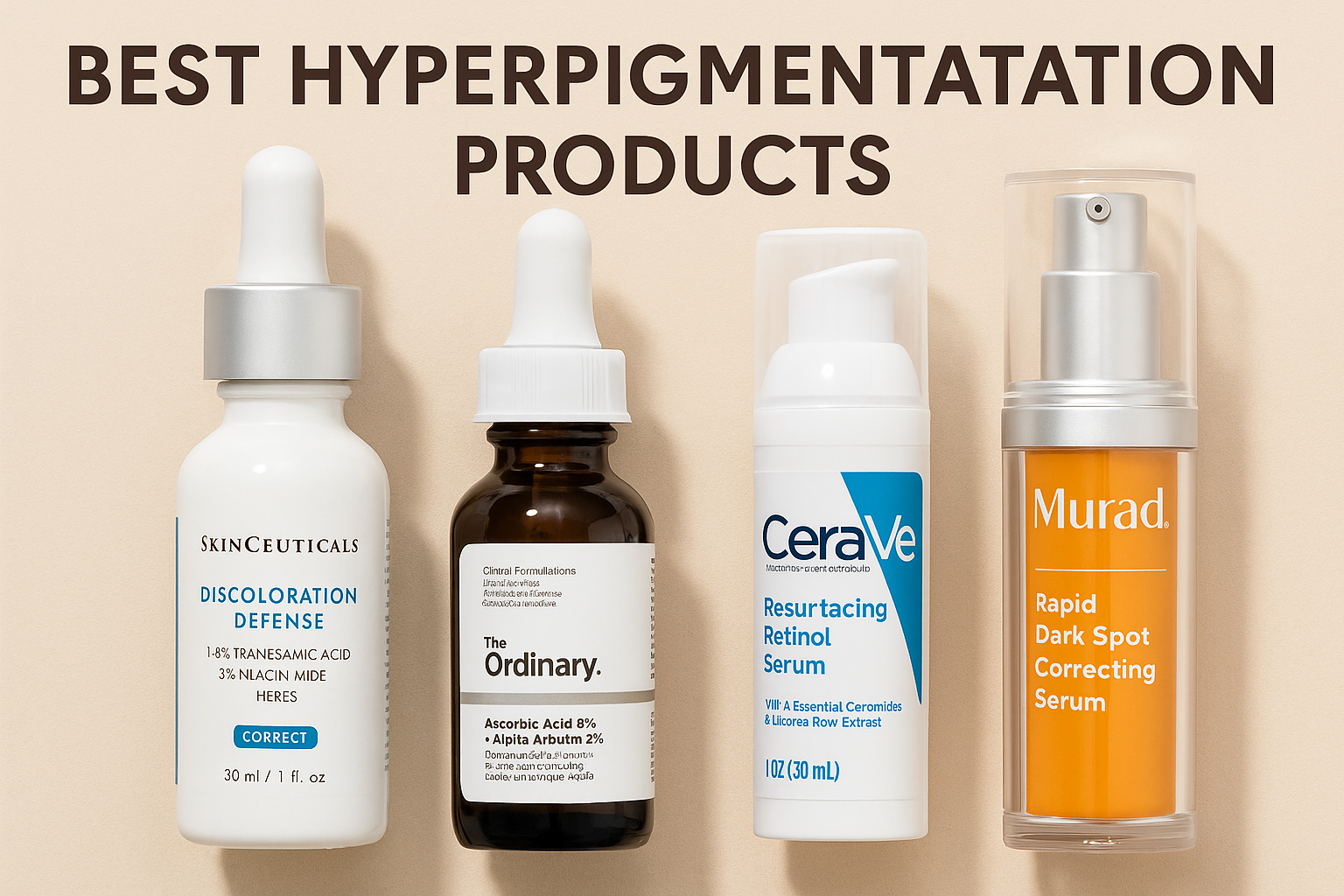




 Acne
Acne Anti-Aging
Anti-Aging Business
Business Digital Marketing
Digital Marketing Economics
Economics Movies
Movies Personal Finance
Personal Finance Websites
Websites
